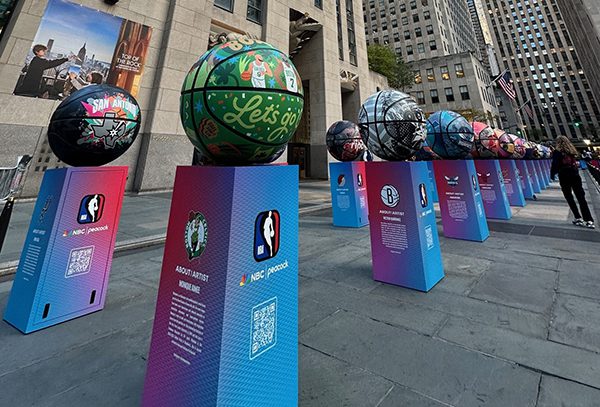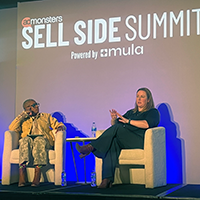One-dimensional agencies should be a thing of the past.
We still have Peter Breen’s June 2000 editorial tacked up on the wall here at Clarion. In it, Peter poked some good-natured fun at promotion agencies that now claim they are no longer promotion agencies. His favorite alternative (and ours) is the agency that professed to have become a “whatever-it-takes agency.”
Aren’t we all! But there is no denying – and no rational reason to run from the reality – that any promotion agency which denies its roots has forgotten what made it great in the first place.
More to the point, the issue is not so much what we call ourselves but how we organize ourselves to help clients build their brands. In this area, most agencies – of the promotion, advertising, or whatever-it-takes varieties – have been woefully neglectful.
We all need to take a step back from the heat of the PROMO 100 survey and examine the forces that brought us to where we are today. And then – here’s the hard part – we need to figure out what to do about it.
A Brief History In the beginning, there was advertising. It enjoyed a nearly idyllic existence in a world in which product and service messages were effortlessly and elegantly crafted and conveyed through a tidy triad of television networks and seven-sister magazines. (That may be an exaggeration, but not by much.)
During the late 1970s, the shingles began flying off the roof. Sales promotion tactics whirled across the landscape, gaining velocity as direct marketing joined the storm. Once-monolithic media were shredded into a gazillion alternatives. Consumers happily joined in the maelstrom, letting it be known that The Brady Bunch didn’t necessarily reflect the way they lived their lives. By the turn of the century, the Internet had bestowed upon consumers additional muscle as interactive participants in brand experiences. The burning orb that grants light or imposes darkness upon the marketplace today clearly and unequivocally is the consumer.
Meanwhile, retailers ganged up to a point where they arguably held the fate of brands in their hands, and were none too hospitable to any brand names but their own. The big brands of the previous two decades realized that their growth depended on global expansion that projected universal brand benefits on a local-market basis.
Although advertising by itself may have receded from its previous frontline role, marketing as an element of business success has become more important than ever. This is in part because brands are tougher to differentiate; because product and service features are so much easier to replicate.
So it falls to marketing to make the difference, which means marketing must be that much more persuasive and motivating. Generally, that means developing a richer, integrated mix of marketing activities that completely surround and engage consumers in the brand “experience.”
Organizations Must Change It falls to agencies to find new, innovative ways to help their clients deal with these various issues. While the marketplace has become more complex, their ability to respond effectively has been depleted in some important ways. Most significantly, trends toward marketing department downsizing has handed the agencies huge new challenges – which as we all know is spelled o-p-p-o-r-t-u-n-i-t-i-e-s.
And yet promotion (and other types of) agencies basically “suit up” pretty much as they did before the landscape changed so dramatically. Most agencies and brand owners still operate under outdated standards for both process and people. The unchanged role of the account executive, we think, represents the pivot point.
The traditional role of the account executive must change if agencies and their clients are to compete and win today. Account execs historically have focused on a single discipline and were trained to shepherd client directives into creative executions. The model is premised on the assumption that the client has all the information, experience, creativity, and answers – and too often relegates AEs to the role of passive order-takers as opposed to active partners. This simply isn’t good enough anymore.
Account executives must become executive producers, cross-trained in multiple marketing disciplines as well as media planning and capable of collaborating with clients on a strategic basis. Agencies – be they advertising, direct, promotion, or p.r. – that re-deploy account executives as executive producers will be best equipped to create and execute truly innovative, integrated marketing programs that deliver a measurable return on investment.
Until account execs are trained and given the tools to deliver “whatever it takes” as executive producers, it won’t matter much what an agency calls itself. What matters is that our brands are supported by people and processes that support both marketing and sales objectives. Call it integrated, holistic, or just plain marketing, that’s what it takes to build brands these days.
And, as far as we are concerned, the bottom-line orientation of sales promotion is as good a place to start as any – and better than most.
FEBRUARY 2001 Polaroid Corp., Cambridge, MA, in December tapped DVC Group to handle its estimated $20 million promotion account. The win should provide the agency with a sizable bump in billings, which stood at $54 million in 1999.
Morristown, NJ-based DVC gained the business after a review that included pitches from more than 15 shops, according to Polaroid vp-marketing Brad Duarte. Media reports identified some of the participants as TLP, Inc., Wilton, CT; Ryan Partnership, Westport, CT; Zipatoni, St. Louis; and Chicago agencies Beyond DDB, DraftWorldwide, and Leo Burnett Northstar. Chicago-based Communicator, which handled the account for two years, did not participate.
“We wanted an agency that could create consumer excitement and drive that down to the trade level,” says Duarte. DVC’s “processes for strategy, researching, and accountability were very much in line with how we do things,” he says. DVC will staff the Polaroid team with existing personnel and new hires, with first work expected in fourth quarter 2001, according to executive vp-account director Jill Draper.
Polaroid is looking to “enhance our overall promotion effectiveness” by doing “a few, bigger promotions better,” says Duarte.
The account could be challenging: Announcement of DVC’s selection came several days after Polaroid said it might take restructuring charges in light of lower-than-expected revenues and profits in fourth quarter 2000.
Co-Options, Darien, CT, named by Miller Brewing Co., Milwaukee, to handle in-store partnership promotions through the 2002 Super Bowl.
Wireless communications company Terion, Inc., tapped Brigandi & Associates, Chicago, to handle a major branding initiative.
Target Marketing & Promotions, Boston, named for another one-year stint as agency of record for the Cuervo tequila brand by UDV Central Independent Marketing Co. The shop has worked with Cuervo since 1992, and also handles UDV’s West and Northeast marketing affiliates.
PROMO mourns the passing of Andrea Metzler, founder and ceo of San Francisco-based agency Highway One, who died of cancer in November. Those wishing to remember her are invited to make a contribution to the Moraga Valley Presbyterian Church, 10 Moraga Valley Lane, Moraga, CA 94556.
David Brown, formerly managing director for the Chicago office of Ogilvy One and Ogilvy Interactive, assumed Highway One’s ceo post last month. The agency is part of Chicago-based Bcom3 Group.



